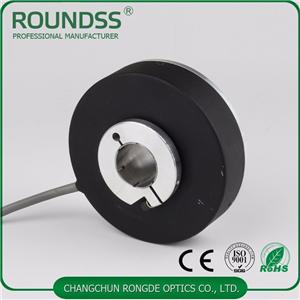- 홈
- >
- 뉴스
- >
- Industry News
- >
- How to use the output signal of the encoder?
How to use the output signal of the encoder?
The rotary encoder is a device for measuring the speed. During the actual operation of the application, the output signal type of the rotary encoder is touched.
First, the signal sequence of the rotary encoder
In general, the output signal of the encoder is divided into two phases of A and B (the phase difference of the signal sequence of the two channels of A and B is 90 degrees), and a zero pulse is output for each revolution.
When the spindle rotates in the clockwise direction, the output pulse is pressed as shown below. The A channel signal is located before the B channel; when the spindle rotates counterclockwise, the A channel signal is located after the B channel to determine whether the spindle is forward or reverse.
Second, the zero signal of the rotary encoder
The encoder sends a pulse every revolution, called the zero pulse or the identification pulse. The zero pulse is used to determine the zero position or the identification position.
To accurately measure the zero pulse, regardless of the direction of rotation, the zero pulse is output as the combination of the high bits of the two channels. Due to the phase difference between the channels, the zero pulse is only half the pulse length.
Third, the warning signal of the rotary encoder
Some encoders also have an alarm signal output, which can alarm the power failure and the LED failure, so that the user can replace the encoder in time.
The NPN / PNP open collector output (NPN / PNP Open Collector) is the most basic output mode, with poor anti-interference ability and short output effective distance. It is used in rotary encoders for incremental encoder outputs and is now used less frequently.




